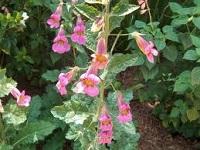Tianwang buxin teapills
Ginseng (人参)
|
   | Ginseng (pronounced /ˈdʒɪnsɛŋ/) is any one of 11 species of slow-growing perennial plants with fleshy roots, belonging to the genus Panax of the family Araliaceae.
Ginseng is found only in the Northern Hemisphere, in North America and in eastern Asia (mostly Korea, northeastern China (Manchuria), Bhutan, and eastern Siberia), typically in cooler climates. Panax vietnamensis, discovered in Vietnam, is the southernmost ginseng known. This article focuses on the series Panax ginsengs, which are the adaptogenic herbs, principally Panax ginseng and P. quinquefolius. Ginseng is characterized by the presence of ginsenosides.
Siberian ginseng (Eleutherococcus senticosus) is in the same family, but not genus, as true ginseng. Like ginseng, it is considered to be an adaptogenic herb. The active compounds in Siberian ginseng are eleutherosides, not ginsenosides. Instead of a fleshy root, Siberian ginseng has a woody root.
The English word ginseng derives from the Chinese term rénshēn (simplified: 人参; traditional: 人蔘). Rén means "man" and shēn means a kind of herb; this refers to the root's characteristic forked shape, which resembles the legs of a man. The English pronunciation derives from a southern Chinese reading, similar to Cantonese yun sum (Jyutping: jan4sam1) and the Hokkien pronunciation "jîn-sim".
The botanical/genus name Panax means "all-heal" in Greek, sharing the same origin as "panacea", and was applied to this genus because Linnaeus was aware of its wide use in Chinese medicine as a muscle relaxant.
Besides P. ginseng, many other plants are also known as or mistaken for the ginseng root. The most commonly known examples are xiyangshen, also known as American ginseng 西洋参 (P. quinquefolius), Japanese ginseng 东洋参 (P. japonicus), crown prince ginseng 太子參 (Pseudostellaria heterophylla), and Siberian ginseng 刺五加 (Eleutherococcus senticosus). Although all have the name ginseng, each plant has distinctively different functions. However, true ginseng plants belong only to the Panax genus.
The root is most often available in dried form, either whole or sliced. Ginseng leaf, although not as highly prized, is sometimes also used; as with the root, it is most often available in dried form. Folk medicine attributes various benefits to oral use of American ginseng and Asian ginseng (P. ginseng) roots, including roles as an aphrodisiac, stimulant, type II diabetes treatment, or cure for sexual dysfunction in men.
Ginseng may be included in small doses in energy drinks or tisanes. It may be found in hair tonics and cosmetic preparations, as well, but those uses have not been shown to be clinically effective.
|
Rehmannia (地黄)
|
  | Rehmannia is a genus of six species of flowering plants in the order Lamiales, endemic to China.
The genus was included in the family Scrophulariaceae or Gesneriaceae in some older classifications. The current placement of the genus is in neither Scrophulariaceae s.s. nor Plantaginaceae s.l. (to which many other former Scrophulariaceae have been transferred). Earlier molecular studies suggested that its closest relatives were the genera Lancea and Mazus (Oxelman et al., 2005), which have been included in Phrymaceae (Beardsley & Olmstead, 2002). Subsequently it was found (Xie et al., 2009) that Rehmannia and Triaenophora are jointly the sister group to Lindenbergia and the parasitic Orobanchaceae.
Sometimes known as Chinese Foxglove due to its superficial resemblance to the genus Digitalis, the species of Rehmannia are perennial herbs. The plants have large flowers and are grown as ornamental garden plants in Europe and North America, and are used medicinally in Asia.
Known as dìhuáng (地黄) or gān dìhuáng (干地黄) in Chinese, R. glutinosa is used as a medicinal herb for arthritic conditions within Chinese traditional formulations.
Rehmannia contains the vitamins A, B, C, and D, as well as other compounds, such as an iridoid glycoside, catalpol, that has been shown to exert protective effects on dopaminergic neurons in aged rats to help inhibit microglial activation, thereby reducing the production of pro-inflammatory factors.
The name "Rehmannia" has also been given to a genus of Jurassic ammonites belonging to the Reineckeidae family.
|
|